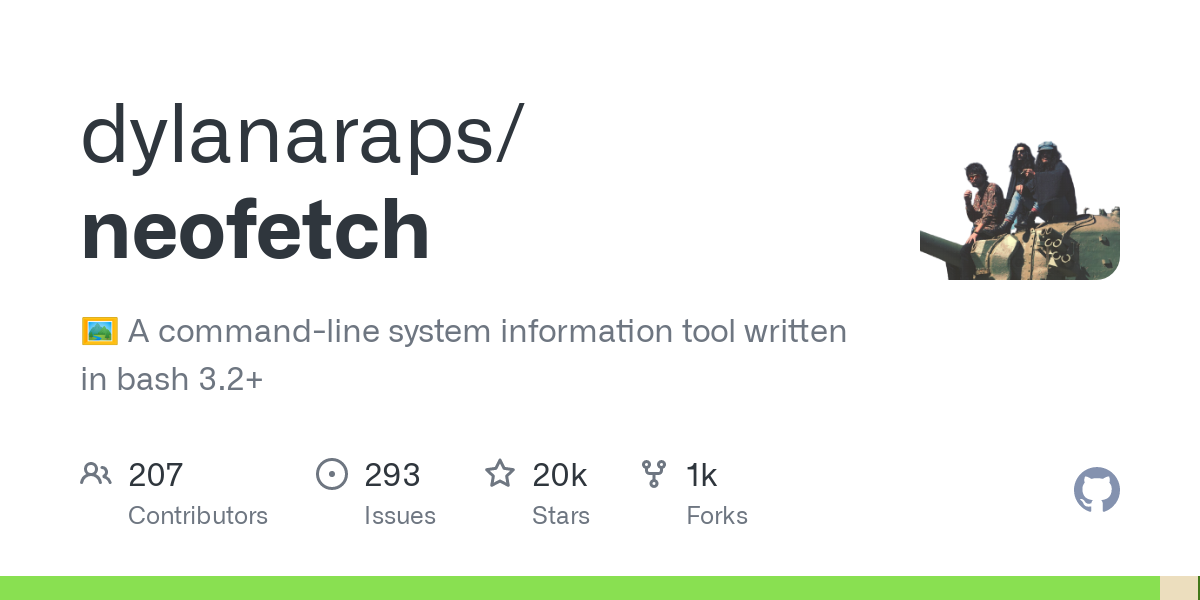cross-posted from: https://programming.dev/post/13437386
The author’s profile says this:
“Have taken up farming.”
I don’t understand the fascination with a program that tells you what kind of system you’re using. I’m not trolling. Can someone enlighten me on its usefulness beyond “yep, that’s what my system looks like”?
It’s a command that pulls a whole bunch of useful system information and sticks it on one page.
Really, the biggest use of it is for showing other people your system- especially showing off. It’s a staple of “look at my system” brag posts.
But to be generous, there are (small) legit use cases for it. If you manage a lot of machines, and you plausibly don’t know the basic system information for whatever you happen to be working on in this instant, it’s a program that will give you most of what you could want to know in a single command. Yes, 100% of the information could be retrieved just as easily using other standard commands, but having it in a single short command, outputting to a single overview page, formatted to be easily readable at a glance, is no bad thing.
deleted by creator
@unterzicht that IS it’s use. It is primarily used in show-off posts where people present their systems so that people in the replies can get a quick glance on what they’re running.
The reason this is big news is because
neofetchwas by far the biggest project of it’s kindIt’s for showing off your setup to others
Neofetch is actually a benchmarking tool used by Arch Linux users which compete to show their high scores.
Thanks for being brave enough to ask the question I was too cowardly to post
It is for the situation “what even is this OS” that aren’t answered by uname -r
But since you need to know what OS this is to install this program with the package manager, it’s only useful if it was previously installed during the initial setup.
I guess its one of those program every OS should have installed. Like screen.
That’s what
cat /etc/os-releaseis for.
I install it on servers and put it in my bash profile so it runs when I SSH in or open a new terminal tab. Mostly just as a safety thing. It’s basically a reminder to double check I’m on the correct machine/tab before I run any commands.
This is my use case as well i run neofetch on ssh connect and disconnect so I always have a visual indicator of what machine I’m in.
That seems pretty useful, actually.
It doesn’t have to be neofetch but even in my containers and docker stuff, I try to put a little message so I don’t fuck up something.
Running through a checklist is important. I learned that from a helicopter pilot at a bar but I do think it’s true in our field. It’s not life or death on a server but training yourself to go through a simple checklist (even if it’s just “make sure this is the right terminal tab”) is good advice.




